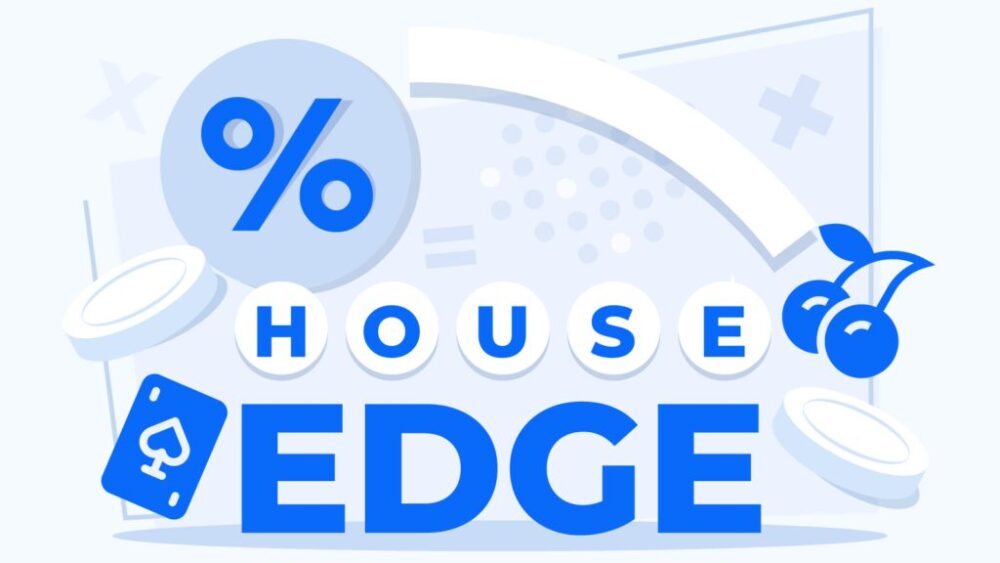The house edge refers to the mathematical advantage casinos have over players in games of chance like roulette, craps, baccarat, blackjack and slot machines. It is the amount the casino expects to gain from each bet placed by gamblers.
Calculating A Game’s House Edge
A game’s house edge is derived from its mathematical model known as expected value. The expected value on a $1 wager represents the average net amount lost per bet when that bet is played continuously. It accounts for all potential player outcomes from that $1 wager based on the game’s rules and payouts. Every game at Casino Guts has a different house edge that impacts the likelihood and size of player wins and losses over time.
The formula for expected value is:
EV = (odds of winning x payout) – (odds of losing x bet amount)
If a game’s expected value is negative after accounting for all potential outcomes from a bet, then over many iterations, the casino will earn that amount on average per $1 wagered. This is equivalent to the house edge.

House Edge Across Common Casino Games
The house edge varies widely across different casino games based on factors like game rules, number of decks used, and payout schedules. Here are the typical house edges:
| Game | House Edge |
| Blackjack | 0.5% – 1% |
| Baccarat | 1.06% – 1.24% |
| Craps | 1.41% – 16.67% |
| Roulette | 2.7% – 5.26% |
| Slots | 2% – 15% |
As shown above, blackjack offers the lowest house edge when played with perfect basic strategy. Meanwhile, slots provide casinos with their highest house advantage. Skill-based games like blackjack give knowledgeable players an opportunity to reduce the house edge by making optimal decisions, while the house edge remains fixed in games of pure chance like roulette and slots.
Impact of House Edge on Expected Player Outcomes
While short-term results may be positive or negative in a given session, over time the house edge determines a gambler’s expected loss relative to the total amount wagered. The higher the house edge, the greater the player’s average loss will be. This mathematical disadvantage needs to be overcome via luck in order to consistently win money gambling.
Here is an example showing expected loss over 1,000 $1 wagers across games with different house edges:
| House Edge | Expected Loss |
| 1% | $10 |
| 5% | $50 |
| 15% | $150 |
While outcomes will be random session to session, over time the mathematical edge heavily favors the casino. Understanding house edge allows players to temper expectations and strategize based on overall chances of winning or losing at different games.

Adjusting Bet Sizes Based on House Edge
The house edge represents the average percent of each bet that the casino expects to win from players over time. This mathematical advantage can make it extremely difficult for players to come out ahead in the long run. However, by adjusting bet sizes properly, gamblers can reduce potential losses and increase the chances of walking away a winner.
For low house edge games like blackjack or baccarat, larger bet sizes carry lower risk since the casino’s mathematical edge is smaller. For example, on a $10 blackjack bet with a 1% house edge, the expected loss is only $0.10 per round played. This makes it more feasible to absorb normal variance in outcomes.
Meanwhile, games with very high house edges like slots can warrant smaller per spin wagers. If the house edge is 10%, a $1 spin expects to lose $0.10 on average versus $1.00 lost when betting $10 per round over time. Lower betting allows players to extend play longer and increase chances of hitting occasional jackpot spins.
While bankroll considerations factor into bet sizing as well, keeping the house edge impact in mind allows players to size appropriately for their game of choice and risk tolerance. Spreading an allotted gambling bankroll across more rounds at smaller sizes in higher house edge games can at times yield better results than larger bets and quicker losses.





